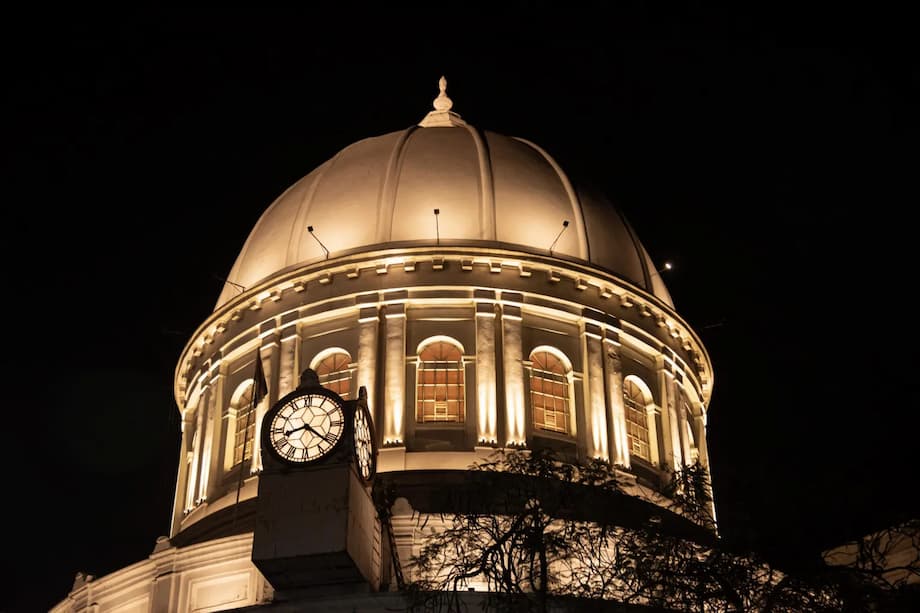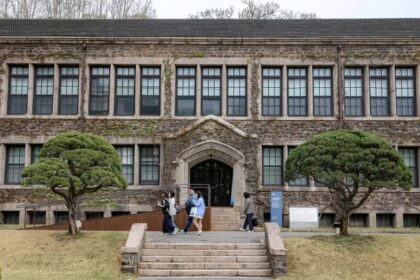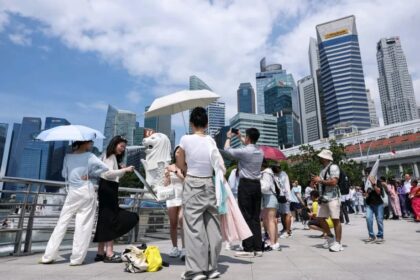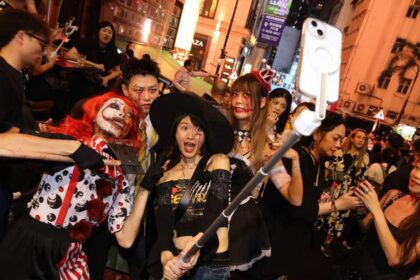After dark, Kolkata heritage takes the spotlight
As the last light drains from the Hooghly sky, buses and walking groups set out across Kolkata with a different itinerary in mind. The classic colonial facades, temple spires, synagogues, cathedrals and century old markets are still on the route, yet the real attraction is what happens after sundown. Carefully positioned beams turn lintels, domes and colonnades into a night stage. The city’s textures, long hidden after office hours, take center stage.
- After dark, Kolkata heritage takes the spotlight
- How a WhatsApp group sparked a citywide glow
- The lighting blueprint, from wattage to warm hues
- What it costs, who pays, and how the money is governed
- Fixing what the light reveals, from facades to clocks
- Night tours, safety and the new city rhythm
- A model other cities can adapt and the limits to watch
- Voices on the project
- Key Points
Kolkata, the former capital of British India until 1911, sits on an architectural archive that mixes neoclassical, Gothic, Art Deco and indigenous styles. For decades, much of this fabric disappeared into shadow when shops closed and traffic thinned. A citizens collective has set out to change that, one facade at a time, lighting heritage so that the city can be read at night as clearly as it is by day.
The movement has already altered the rhythm of heritage tourism. Guides now schedule evening circuits through Dalhousie, Chowringhee, Esplanade and the old neighborhoods of north Kolkata, where layered light renders pediments, cornices and balconies with surprising clarity. Residents who have walked past these buildings for years say they are seeing details for the first time.
How a WhatsApp group sparked a citywide glow
The spark was small and very local. In late 2023, writer and businessman Mudar Patherya noticed that the dome of Maniktala Market looked refreshed after a new coat of paint, yet it vanished after dusk. He raised a modest corpus from friends to add lighting. The dome glowed, the idea clicked, and requests began to arrive. Patherya assembled a WhatsApp group that called itself Kolkata Restorers. It is not a formal organization, just a network that identifies sites, raises funds, hires designers and contractors, and keeps records transparent.
From that first experiment, the Calcutta Illumination Project has rolled across churches, synagogues, civic headquarters and private residences. The model is simple. The group pays for fixtures and installation through donations. Property owners pay the monthly electricity bill. The lights run for limited evening hours. In under two years, more than 90 facades have been lit across the city, with new sites switching on every few weeks. The aim now is to cross 200 in the near term, with a longer horizon of several hundred more over the next several years.
Signature landmarks already illuminated include some of the city’s most visited and most overlooked places alike.
- Raj Bhavan, the former viceroy’s residence
- General Post Office and the Dead Letter Office
- St Paul’s Cathedral, St James Church and Sacred Heart Church
- Maghen David Synagogue
- Geological Survey of India building and Eastern Railway headquarters
- Chowringhee Mansions, Stephen Court and the Metropolitan Building
- Academy of Fine Arts and the Kolkata Municipal Corporation headquarters
- Royal Insurance, Standard Life and National Insurance buildings
- New Market, also known as Hogg Market, with its clock tower
- Greek Orthodox Church and other places of worship
The lighting blueprint, from wattage to warm hues
Lighting heritage is not about flooding a wall with brightness. The effect that has redrawn Kolkata’s skyline relies on restraint. Designers use warm yellow LED lights to echo older sodium lamps without their inefficiency. Beams are layered to pick out columns, capitals, cornices, domes and clock faces. The goal is to reveal form, avoid harsh glare, and prevent light spill into windows or the night sky.
Color and placement
Most heritage sites in the project use warm color temperatures that sit around the golden end of the spectrum. This preserves the material feel of laterite, sandstone and painted stucco, and it is gentler on the eyes than cool white light. Placement matters as much as color. Fixtures are tucked onto plinths, ledges and parapets, with shields and angles that keep beams tight. Where facades are intricate, lights are set in tiers so that arches, railings and murals each receive their own soft accent.
Lighting designer Suyash Narsaria refined the early installations to make them efficient and architectural rather than theatrical.
“We reduced the wattage to make it more efficient, changed positions, and built layers that highlight columns, railings and murals,” he said, describing how careful placement matters more than brute brightness.
Timing and maintenance
Most buildings switch on at dusk and turn off between 9 pm and 11 pm, depending on location. Many sites use timers, so illumination runs for a few evening hours, which helps control energy use. Owners who host the lights report typical electricity bills in the range of 2,500 to 3,500 rupees per month (roughly 30 to 40 US dollars), since the fixtures are LED and the run time is limited. The group also monitors installations and handles routine maintenance.
What it costs, who pays, and how the money is governed
The finances are designed to be simple and public. Donations cover the cost of lights, wiring, controls and installation. Property owners pick up the recurring power bill. By keeping each project small and visible, the group has attracted hundreds of donors, from families and students to companies and high net worth supporters. In the first year, more than 160 donors joined. By the second, that number had crossed two hundred.
Project budgets vary by size and complexity, yet many facades fall in a band of two to three lakh rupees per site (about 2,500 to 3,500 US dollars). A published target for the early phase estimated that illuminating several dozen facades would cost a fraction of what a single luxury apartment might cost in the city. That comparison, repeated in community meetings, helped donors see how far small contributions could go.
The governance is part of the appeal. The group leaves no plaques and seeks no personal credit. It operates with audited accounts, zero salaries and documented payments by cheque. Donors receive receipts and periodic updates on progress and costs. Vendors are invited to quote, bills are cleared quickly, and there is active negotiation to keep prices lean without cutting quality. This approach has built trust, sped up execution and encouraged new supporters to step in.
Fixing what the light reveals, from facades to clocks
Illumination brings beauty into focus, and it also exposes decay. Before many sites could be lit, owners had to repair water damage, replace cracked panels or repaint weathered surfaces. That work has become a quiet side effect of the project, redirecting attention back to maintenance that had been deferred for years.
One strand of restoration has captured citywide attention. Kolkata’s tower clocks, many silent for decades, are being repaired alongside lighting. The clock at Hogg Market, a Gothic pile where the quarter hour once sang across New Market, is now the focus of a complex revival. Roof leaks had damaged its mechanism and timber floors, so structural repairs had to precede illumination.
Enter Swapan Dutta, a fourth generation clock repairer whose family once worked for a British era firm. Known across the city as Ghari babu, he has been rebuilding the gears, pendulums and chiming works of public clocks in churches and markets.
“These clocks stopped years ago. We have to examine them, make calculations and reconstruct missing parts,” Dutta said, adding that the Hogg Market clock, with a chime for every quarter, is the star he most wants to hear again.
The restoration push has extended beyond clocks. Volunteers associated with the effort have cleaned more than a thousand tombstones in the South Park Street Cemetery, where luminaries of the city’s early history are buried. Small acts, like reviving a clock or reading an old epitaph, have helped residents reconnect with a layered past that often felt remote.
Night tours, safety and the new city rhythm
The lights have changed how people move through central Kolkata after office hours. Heritage walks that once ended in late afternoon now carry on into the evening. Guides report that crowds linger longer in Dalhousie and around the river as illuminated facades draw phones and cameras. Retailers near lit buildings say footfall has improved on weekend evenings. Families are bringing children to see the glowing landmarks, and communities have begun to schedule cultural performances at inaugurations, from classical music to small choral ensembles.
The effect is also practical. A building that glows until 10 pm adds gentle light to streets that felt deserted after dark. It does not replace street lighting, yet it contributes to a sense of watchfulness and care. Police and municipal agencies welcome any effort that makes people reclaim public space at reasonable hours. The care is visible in how lights are managed. Installations avoid blinding motorists, stays within limited hours, and are tuned so that residents are not kept awake.
A model other cities can adapt and the limits to watch
India’s cities are full of architectural gems, yet municipal budgets are stretched. Kolkata’s citizen led model offers a way to mobilize pride, money and know how without waiting for a large program. Crowdfunding works best when the unit of work is small, when progress is visible week by week, and when accountability is strict. Those ingredients are in place here, which is why donors who began with a few hundred rupees have stayed engaged.
The idea is already inspiring calls to replicate it in other cities. Community groups in places like Indore have experimented with small civic projects through local fundraising. Internationally, urban spaces from the High Line in New York to redesigned parks in London drew strength from public support. Kolkata’s experience adds a distinctly Indian twist, where a WhatsApp network and audited ledgers can light a million square feet of masonry at a cost that feels reachable.
There are limits to watch. Heritage lighting should not wash the night sky with excess brightness. Designers must keep color warm and avoid blue heavy light that disrupts birds and sleep. Timers and curfews matter. Longer term, maintenance can lag once the initial enthusiasm fades. Sustaining the program means training owners, securing small maintenance funds, and cataloging each installation so that parts and settings are easy to replace. The early emphasis on frugal fixtures, careful documentation and active maintenance by the group is a strength that will help the glow endure.
Voices on the project
Tour leader Sujoy Sen, who organizes evening circuits through the illuminated core, said the city feels newly legible after dark.
“I was stunned. I have seen Paris by night. I did not realize Kolkata could be like that also. I wanted other people to see it as well.”
Writer Himanjali Sankar joined one of the first night tours after returning to her hometown.
“It is like the buildings are coming alive, reclaiming their grandeur.”
The phrase that anchors the funding model comes from the project’s founder, Mudar Patherya.
“The model is simple. It is your property, my lights. You pay for the electricity and I work out that cost in advance.”
Narsaria, the lighting designer, described the technical learning curve that followed the first few switches on.
“We reduced wattage, changed positions and layered the light so that details stand out without glare.”
Dutta, the clock specialist known as Ghari babu, explained the painstaking work behind the chimes people hope to hear again.
“We have to examine each mechanism and remake missing parts. It takes time, yet the sound is worth it.”
Key Points
- A citizens collective called Kolkata Restorers has illuminated more than 90 facades in under two years, with a near term target of 200 and a longer horizon of several hundred more.
- The model is donation funded installation and owner paid electricity, with warm LED lights running for a few evening hours.
- Costs for many sites fall between two and three lakh rupees per facade, while monthly power bills for owners are typically 2,500 to 3,500 rupees.
- Governance is central: audited accounts, zero salaries, receipts for donors and competitive quotes for vendors.
- Illumination has spurred repairs, revived public clocks and encouraged heritage walks, photography and evening footfall.
- Designers use warm color, tight beam control and timers to limit light spill and energy use.
- The approach is drawing interest as a template other Indian cities could adapt, provided maintenance and dark sky concerns stay front of mind.












